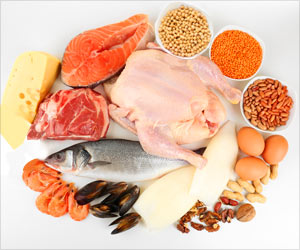High protein foods such as beef, soy, and dairy products influence the brain region that regulates appetite to reduce food intake and can help treat obesity.
Highlights
- Phenylalanine reduces food intake by affecting the gut and the brain.
- Phenylalanine is an amino acid that can suppress appetite by affecting the release of appetite-regulating hormones in the gut.
- It can be used to prevent or treat obesity.
How Does Phenylalanine Regulate Appetite?
Professor Kevin Murphy and colleagues at Imperial College London, examined the effect of the amino acid on food intake and brain activity in areas known to be involved in appetite regulation to investigate the effects of phenylalanine on appetite and gut hormone release.
Mice were given phenylalanine, either orally or rectally, to assess the effects on different parts of the gut. Food intake was monitored at regular intervals over 24 hours and the amount of activity in brain areas associated with appetite regulation was also assessed.
Both oral and rectal phenylalanine reduced food intake of the mice and increased activation in a brain area known to be involved in regulating appetite. After rectal administration, even an amount of phenylalanine 10 times lower than would be eaten daily on a high protein diet, resulted in reduced food intake and activated the appetite regulating centres in the brain.
Mariana Norton, the PhD student who conducted the study, comments, "Understanding how food is detected in the gut may help to identify ways of treating or preventing obesity. The next step is to establish whether phenylalanine can drive similar appetite reducing effects in humans."
Foods Rich in Phenylalanine
High protein foods, such as milk, dairy products, meat, fish, chicken, eggs, soya beans, and nuts are good sources of phenylalanine.
Reference
- Mariana Norton, Ye Cao, Risha Amarsi, Isabel Fernandes Freitas, Amin Alamshah, Kevin G. ‘Rectal and oral administration of L-phenylalanine supresses food intake and modulates neuronal activation in appetite-regulating brain regions in rodents’. Society for Endocrinology Annual Conference (2017).
Source-Medindia
















